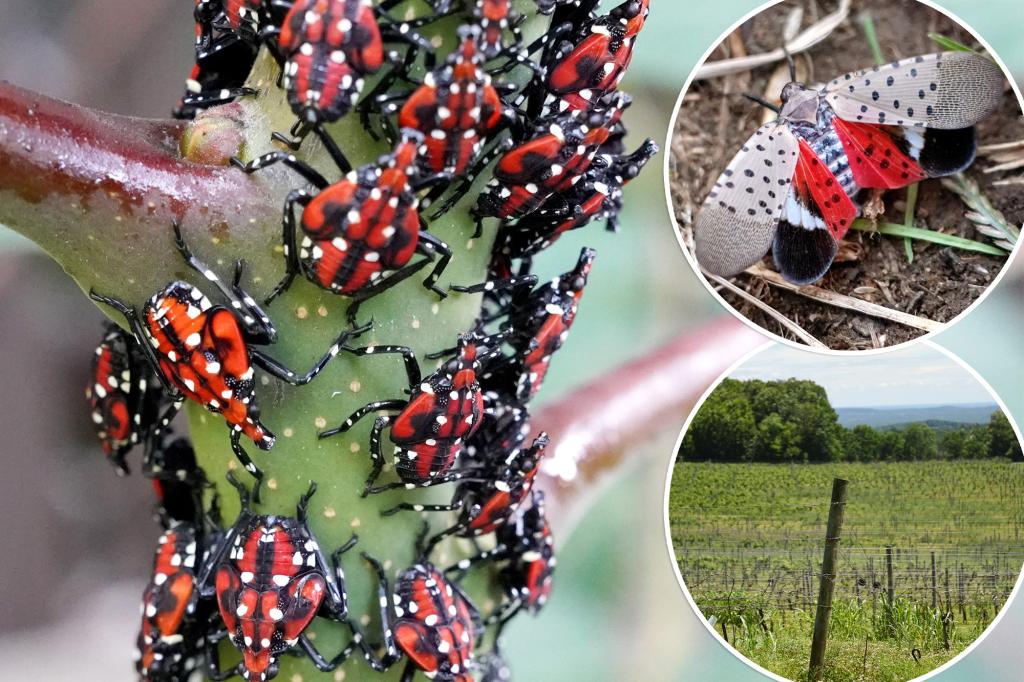An invasive species of spotted lanternfly is threatening America’s wine supplies, with eggs of the destructive insect being discovered in California last March. The discovery of the eggs in a shipment from New York has raised concerns about the potential impact on California’s wine industry. The California Association of Winegrape Growers is warning about the threat posed by the lanternfly, which has been found in 18 states and is known to feed on grapevine sap, damaging the plants and potentially causing plant death. The California Department of Agriculture emphasizes the importance of early detection and interception of these bugs to prevent economic and ecological losses.
The detection of the lanternfly eggs in California has prompted concerns about the possible spread of the insect throughout the state. The bugs were found on a metal art installation sent from New York, highlighting the ease with which these pests can be transported across long distances. The California Association of Winegrape Growers is urging the public to be vigilant in identifying and reporting any sightings of the lanternfly, especially as the bugs are expected to mature into adults in July. Early detection and rapid response are essential in preventing the spread of the insect and protecting vineyards and wineries from the potential damage they can cause.
The spotted lanternfly poses a significant threat to vineyards and wineries by feeding on grapevine sap and leaving behind a harmful residue on the plant’s leaves. The bugs can stress the plants, reduce vine health, and potentially lead to plant death if left unchecked. The presence of the lanternfly in California has raised alarms among experts and agricultural officials, who stress the importance of public awareness and cooperation in identifying and eradicating the insect. The California Department of Agriculture emphasizes the critical role that the public plays in detecting and reporting lanternfly sightings to prevent its spread.
The discovery of the lanternfly eggs in California highlights the need for increased vigilance and monitoring to prevent the insect from establishing a foothold in the state’s wine country. The potential impact on the winegrape industry is a significant concern, given the bugs’ destructive feeding habits and the potential for widespread damage to vineyards and wineries. The California Association of Winegrape Growers is working to raise awareness about the threat posed by the lanternfly and to educate the public on how to identify and report sightings of the insect. Early detection and rapid response are essential in protecting California’s wine supplies from the invasive species.
Experts warn that the spotted lanternfly has the potential to cause significant economic and ecological losses if left unchecked in California. The bugs, which first arrived in the United States from Asia in 2014, have since spread to 18 states and are known to pose a serious threat to vineyards and other agricultural crops. The California Department of Agriculture is urging the public to be on the lookout for the lanternfly and to report any sightings to prevent further spread of the insect. The early detection and interception of the bugs are critical in protecting California’s wine industry from the potentially devastating consequences of an infestation.
The discovery of the lanternfly eggs in California has prompted urgent action from agricultural officials and wine industry experts to prevent the spread of the insect and protect vineyards and wineries from potential damage. The public plays a crucial role in detecting and reporting lanternfly sightings, as early detection is key to preventing economic and ecological losses. The California Association of Winegrape Growers is raising awareness about the threat posed by the lanternfly and providing information on how to identify and respond to sightings of the insect. By working together to monitor and report lanternfly activity, Californians can help safeguard the state’s wine supplies and prevent the establishment of this destructive pest in wine country.


